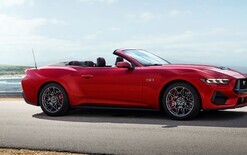Drivers struggle to stay engaged
However, U.S. safety investigators have called on carmakers to do more to ensure drivers stay engaged when using an autonomous vehicles. The National Transportation Safety Board (NTSB) has opened three investigations, two of which involve Tesla vehicles, that call into question the progress that’s been made in guarding against motorist misuse of autonomous/semi-autonomous driving technology. Tesla has lagged behind automakers in embracing driver monitoring. While the electric carmaker still relies on technology that federal investigators said was too easy to sidestep, it’s now working on unspecified improvements to its vehicles, according to the NTSB. “They have indicated that they have already made some improvements and are working on additional improvements,” agency spokesman Peter Knudson said to Bloomberg, in the first indication that the company is contemplating more changes to its driver-assistance system. NTSB highway investigators have been in contact with Tesla technical staff, he added. Driver-monitoring technology is needed for any vehicle that needs humans to handle part of the driving task, said Bryan Reimer to Bloomberg News, who studies driver behaviour at the Massachusetts Institute of Technology. This includes conventional vehicles without driver-assist systems, cars that guide themselves for some periods without human inputs, such as cruise control, and self-driving cars with people serving as safety monitors. Motorists today are bombarded by distractions, from mobile phones to in-dash navigation systems, Reimer added. “Drivers need help making better decisions." The NTSB is investigating two crashes this year in which Tesla drivers were using Autopilot. The system can automate steering and follow traffic in some conditions, but the company warns drivers they must monitor it at all times. The system isn’t designed to be fully autonomous and can’t detect some objects in its path, according to Tesla. In the most recent case, a Model X slammed into a concrete highway barrier on March 23 in Mountain View, California, killing the driver Walter Huang. His family has hired Minami Tamaki LLP to explore legal options, the firm said Wednesday in a statement. Tesla said in a blog post last month that Huang, 38, didn’t have his hands on the wheel for six seconds prior to striking the barrier where lanes split on the freeway. “The driver had received several visual and one audible hands-on warning earlier in the drive,” the company said in the March 30 blog post. “What Tesla has is basically a sensor that just detects whether your hands are on the wheel,” said Mike Ramsey, an analyst at researcher Gartner Inc. “If it doesn’t detect anything on the wheel for a certain amount of time, it first gives a visual warning, then an audible warning, then the car starts slowing down. It’s somewhere in the neighbourhood of 10 seconds or longer. At 70 miles per hour, that’s a long time -- a lot can happen in that period of time.” Tesla has installed an inward-facing camera above the rear-view mirror in its new Model 3 sedan, but hasn’t confirmed whether it could be used to monitor drivers.





